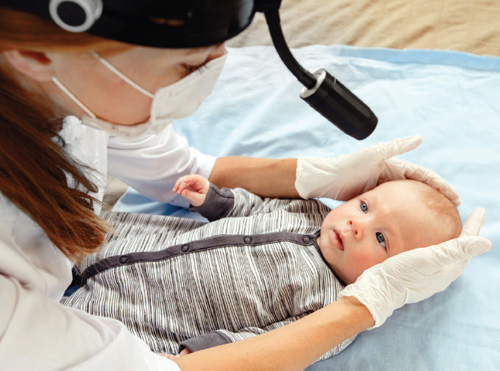Optic capture may reduce need for vitrectomy in very young children

While technically challenging, implanting intraocular lenses (IOLs) using an optic capture through the posterior capsulotomy may help avoid the anterior vitrectomy usually performed using an in-the-bag technique in very young children, Shail Vasavada DO, DNB, FRCS, FICO said at a presented poster session Saturday.
“Although there is no literature to suggest that vitrectomy affects x-thing or y-thing, I think if we can avoid disturbing any of the natural structures—particularly in these young-development eyes—I’m sure that it should help us in some way or the other in the long run,” said Dr Vasavada of the Raghudeep Eye Hospital and Iladevi Cataract and IOL Research Centre, Amedabad, Jaipur, India.
PROSPECTIVE STUDY
Dr Vasavada based his comments on a prospective randomised clinical trial he and his colleagues conducted. It compared five-year outcomes of a conventional in-the-bag IOL implantation—including anterior and posterior capsulorhexis and a limbal anterior vitrectomy with optic capture through the posterior capsule without vitrectomy—in children four years old or younger. Thirty eyes were randomised to the in-the-bag group, of which 27 were followed for five years or more, while 31 were assigned to the optic capture group, of which 28 were followed for at least five years.
Overall, there were no significant differences in visual outcomes or complications between the two groups within the five-year follow-up period. Visual acuity improved in both groups, and there was no significant difference between them, Dr Vasavada reported.
Two eyes in the in-the-bag group required a secondary procedure for significant visual axis opacification (VAO); one at 14 months and one at 16 months after initial surgery. One eye in the optic capture group required a secondary procedure for VAO at 21 months postoperatively. In the in-the-bag group, one child requiring a secondary procedure was under age one year and another over, while the optic capture child was under one year. Secondary procedures were defined as vitrectomy or membranectomy, Dr Vasavada said.
Two eyes in the in-the-bag group and none in the optic capture group developed glaucoma. Both children affected were under one year old at the time of surgery, and symptoms were controlled with topical medications.
CHALLENGING PROCEDURE
A limitation of the study was the skill required to create a posterior capsulotomy and optic capture without disturbing the vitreous face. If the face is disturbed, a vitrectomy must be performed, Dr Vasavada noted. A small capsulorhexis may also make it difficult to do the optic capture, he said.
“Serious long-term complications were the same when you do a vitrectomy or don’t do a vitrectomy. … Optic capture of the IOL whenever possible can avoid vitrectomy and yet reduce visual axis obscuration with similar incidence of glaucoma and inflammation postoperatively,” Dr Vasavada concluded.
